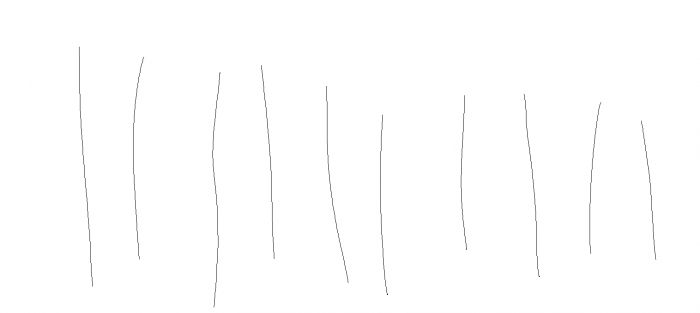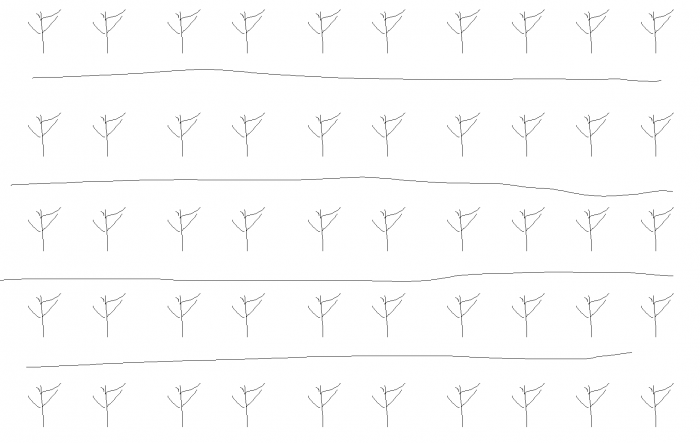Difference between revisions of "HotM:Tree Structure Of Chapter Two"
X4000Chris (talk | contribs) |
X4000Chris (talk | contribs) |
||
| Line 20: | Line 20: | ||
[[File:HotMLinesYes.png|center|700px]] | [[File:HotMLinesYes.png|center|700px]] | ||
| + | |||
| + | The above is a visual representation of chapter two at initial launch. That is "10 paths," but with the more complicated reality sketched in. | ||
| + | |||
| + | === The Above Already Doesn't Include Side Content === | ||
| + | |||
| + | You've already encountered contemplations, and you know that those can just be generally-available, or they can appear after certain city events. They can also be chains in and of themselves. None of that is actually represented on that complex bunch of trees above. These side content bits are in addition to the above. As a reminder, this is a big part of how you titrate difficulty of the core content. | ||
| + | |||
| + | === So How Does This Flow? === | ||
| + | |||
| + | Early on in chapter two, you'd see 10 overall chains you could start, and you'd do whatever ones you want up to the first firebreak. The world state, not which tree you did, would then determine which of the trees in the second section are open to you. In each little tree, you might have made all sorts of different choices. | ||
| + | |||
| + | The first tree on the left in the second tier might be reachable from four different bottom paths, but using different branches on them. A big focus of players on the wiki is likely to be route-planning through this sort of thing. | ||
| + | |||
| + | A route might be something like: "Take this tree, betray, then make a deal, then betray again. Combine that with this other project chain, and be benevolent twice, then you're in the next tier, and choose this option" | ||
| + | |||
| + | === Firebreaks === | ||
| + | |||
| + | Think of each firebreak as ending the trees entirely. When tier 2 rolls around, I'm not checking what trees you did in tier 1. I don't care. What I care about is the state of the world. If the conditions for a tree are met, go for it. If not, then you can't. | ||
| + | |||
| + | Another way of saying this is, future trees in later tiers are not opened simply by which lower trees you did, but HOW you did them. | ||
| + | |||
| + | === Multiple Project Chains At Once? === | ||
| + | |||
| + | Each of those little mini-trees in a tier is a project chain, as a reminder. You'll be able to work on at least three at once per tier if you want, but that will be very very hard. Most new players will probably just go for one at a time, per tier. | ||
| + | |||
| + | == Isn't It Impossible For One Person To Create That Much Content? == | ||
| + | |||
| + | Actually, this is my key innovation -- I get exponential gameplay out for you from linear work for me. It's a bit inherent in the specific structure that I've chosen for how the game moves forward. It's kind of a halfway point between a simulation game and a hand-crafted narrative game, with the strengths from both. I hope to see other games also use this, if they think it would fit! | ||
| + | |||
| + | Baldur's Gate 3 gives exponential output for you from exponential input. A procedural game, or a systems game, gives exponential output from linear input, but only certain kinds of exponential output. | ||
| + | |||
| + | But of course, the point is not to have you go through an exponential amount of content. If you want to, that's fine! But the general reality is that most players who play the game will miss most of the content, and that's absolutely A-OK. This isn't a AAA game where it's determined to make sure nobody misses any set-pieces. | ||
| + | |||
| + | If you play for a healthy number of hours, and have a fun time, and feel like you got to make meaningful decisions that made your route different from everyone else's, that's all I care about. The purpose of this structure of game flow is to give your choices actual weight and meaning, so that you can see the world change around you in ways that are specific to your choices. You seeing every possible choice really is not the goal; being able to compare notes with other players, and talk about the crazy differences in your playthroughs, is. | ||
Latest revision as of 19:22, 12 June 2024
Contents
Intro
There are lots of natural curiosities about how chapter two will play out, for people who have played the demo of the prologue and chapter one. This is very hard to explain well, but I will do my best.
Fair warning: this will make zero sense if you haven't already read The Structure Of The Chapters.
How I Describe Project Chains (But They Are Not Really This)
When I talk about "10 project chains at launch for chapter two," then it calls to mind this:
That's not at all how this is structured. However, at a very broad level, we can squint and call that accurate. When people are asking for a general idea of the volume of content, this answers their question concisely and clearly. The goal for a year after launch is to have 40 of these, after starting with 10.
But the reality of all this is much more exciting than those boring lines.
The Complicated Truth
The horizontal lines here are the firebreaks described in The Structure Of The Chapters. The individual little trees are individual project chains. And broadly, each section there are the tiers, although you won't see the words firebreaks or tiers actually in the game itself.
The above is a visual representation of chapter two at initial launch. That is "10 paths," but with the more complicated reality sketched in.
The Above Already Doesn't Include Side Content
You've already encountered contemplations, and you know that those can just be generally-available, or they can appear after certain city events. They can also be chains in and of themselves. None of that is actually represented on that complex bunch of trees above. These side content bits are in addition to the above. As a reminder, this is a big part of how you titrate difficulty of the core content.
So How Does This Flow?
Early on in chapter two, you'd see 10 overall chains you could start, and you'd do whatever ones you want up to the first firebreak. The world state, not which tree you did, would then determine which of the trees in the second section are open to you. In each little tree, you might have made all sorts of different choices.
The first tree on the left in the second tier might be reachable from four different bottom paths, but using different branches on them. A big focus of players on the wiki is likely to be route-planning through this sort of thing.
A route might be something like: "Take this tree, betray, then make a deal, then betray again. Combine that with this other project chain, and be benevolent twice, then you're in the next tier, and choose this option"
Firebreaks
Think of each firebreak as ending the trees entirely. When tier 2 rolls around, I'm not checking what trees you did in tier 1. I don't care. What I care about is the state of the world. If the conditions for a tree are met, go for it. If not, then you can't.
Another way of saying this is, future trees in later tiers are not opened simply by which lower trees you did, but HOW you did them.
Multiple Project Chains At Once?
Each of those little mini-trees in a tier is a project chain, as a reminder. You'll be able to work on at least three at once per tier if you want, but that will be very very hard. Most new players will probably just go for one at a time, per tier.
Isn't It Impossible For One Person To Create That Much Content?
Actually, this is my key innovation -- I get exponential gameplay out for you from linear work for me. It's a bit inherent in the specific structure that I've chosen for how the game moves forward. It's kind of a halfway point between a simulation game and a hand-crafted narrative game, with the strengths from both. I hope to see other games also use this, if they think it would fit!
Baldur's Gate 3 gives exponential output for you from exponential input. A procedural game, or a systems game, gives exponential output from linear input, but only certain kinds of exponential output.
But of course, the point is not to have you go through an exponential amount of content. If you want to, that's fine! But the general reality is that most players who play the game will miss most of the content, and that's absolutely A-OK. This isn't a AAA game where it's determined to make sure nobody misses any set-pieces.
If you play for a healthy number of hours, and have a fun time, and feel like you got to make meaningful decisions that made your route different from everyone else's, that's all I care about. The purpose of this structure of game flow is to give your choices actual weight and meaning, so that you can see the world change around you in ways that are specific to your choices. You seeing every possible choice really is not the goal; being able to compare notes with other players, and talk about the crazy differences in your playthroughs, is.

